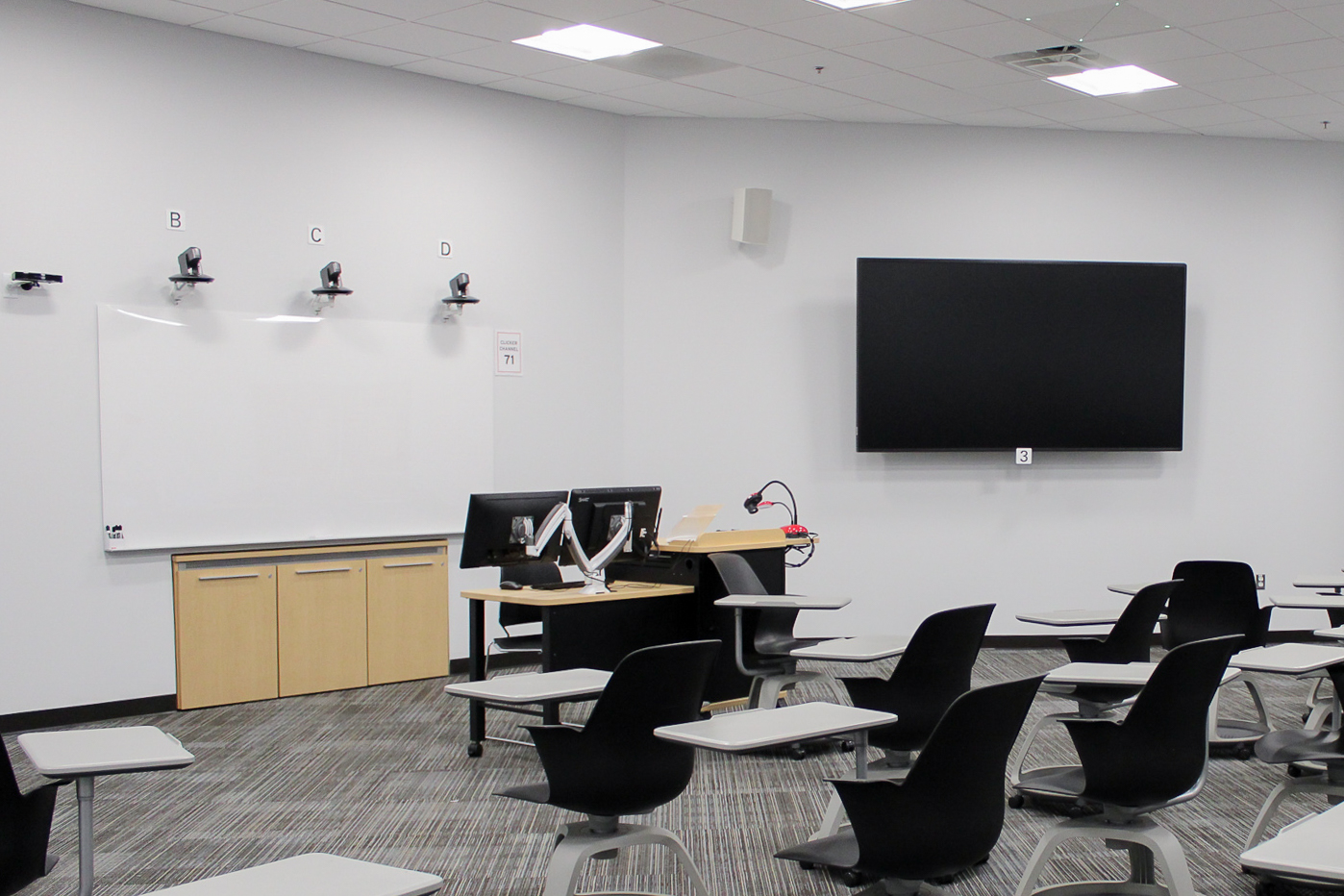Views expressed in opinion columns are the author’s own.
Professors can make or break how a student performs in class. Therefore, to support and accommodate students, professors should be aware of students’ learning resources. In today’s tech-savvy world, students are utilizing digital resources — such as recorded lectures — to enhance their learning, but this is still not as widely accepted and utilized as it should be.
In my experience with classes at the University of Maryland, I’ve had some wonderful, accommodating and receptive professors. They’ve varied greatly in their teaching styles and class organization, but they all had one little thing in common: recorded class lectures.
I use lecture recordings to study and refine my notes, and it feels like a safety net for my learning experience. Other students feel this way about recorded lectures and use it for similar purposes, which makes me — and others at this university — wonder why it’s not considered the standard practice.
Recording lectures and making them available to all students should not only be the standard, but the expectation for professors in lecture-based courses.
However, some professors elect to not record their classes at all. I once had a professor who gave closed-note, in-person exams. This is fine, but it became drastically harder to prepare for exams and learn the content when all the professor provided was insufficient notes and a sparsely written PowerPoint.
While I did not have more resources, many professors still provide study guides, textbooks, online resources and may even hold study sessions. These are great resources, and should not be ignored. As a student, professor support and these resources contribute to my success in a class.
However, there is always room to expand. Lecture recordings’ online accessibility underscores why it should be more widely implemented and normalized in tandem with other resources and supports.
The fear professors have of students’ attendance decreasing is not as severe as it might seem. The availability of lecture recordings doesn’t influence students’ attendance.
I once had a professor who recorded lectures, but would not release them to the class unless a student specifically requested it after also noting they were absent. The professor expressed concern about student absenteeism that occurred in a previous class, and thus did not make the recordings public. To me, this seemed incredibly unfair. Why should I and other students be stripped of a useful tool because of students in a previous class?
The concern over student attendance can be remedied. By offering in-class incentives, such as participation points or completing activities that require a student’s presence, students might still feel inclined to attend classes despite knowing they are recorded. In this way, attendance can be more heavily enforced without depriving students of such a valuable learning tool.
Many professors are also worried over consent and privacy. This is a valid concern, but there are established policies at this university that can assist professors in recording classes. For example, I’m sure we’ve all heard professors announce they will begin recording class, and they sometimes even pause the recording to leave out sensitive conversations.
Moreover, recordings can be edited post-recording, before it is visible by students. This may be a lot of work, but it can be done with the help of teaching assistants. With policies, guidance and protections in place to mediate the concern about consent and privacy, I stray further away from understanding why this is not a standard practice today.
When the COVID-19 pandemic began in 2020, recorded lectures took off in popularity. I believe they’ve stuck around because they benefit virtually every student, absent or not.
Many students actively use lecture recordings to enhance their notes, and recordings increase accessibility for all students. By controlling playback speeds and utilizing features such as closed captioning, lecture recordings help facilitate learning for all. For some who deal with inattention issues, rewatching lectures to process and understand class content is vital.
Lastly, recording lectures is beneficial for the professor as well. Modern education embraces virtual resources. Appealing to the technological expectations that many students hold today, recordings provide teachers with additional teaching strategies. Recordings can be saved and used in other classes or sent to students when class needs to be canceled on short notice, giving professors support to stay on schedule and educate students regardless of the format.
If this university and those working within it are striving to make this institution more inclusive and modernized, then recording lectures is a necessary step.
When there are so many benefits to recording lectures for all students, I’d hope professors would act in their students’ best interest. The advantages students gain from recorded lectures and the ease of which it facilitates modern learning make it a worthwhile cause to find solutions to professors’ concerns. Therefore, this must become the standard and expectation of professors in lecture-based classes today.
Vrisha Sookraj is a junior psychology major. She can be reached at vsookraj@terpmail.umd.edu.



